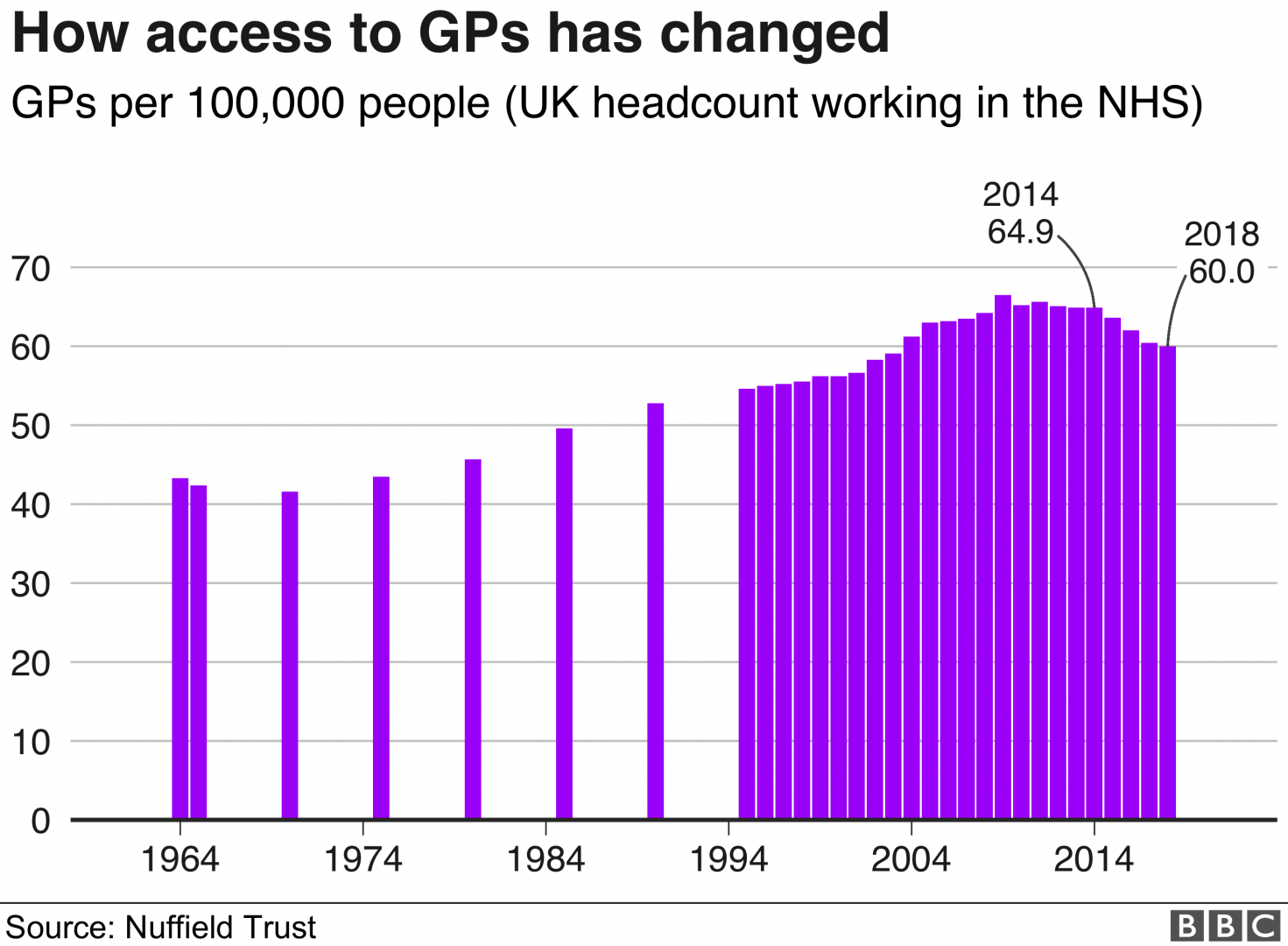GP Numbers show first sustained drop for 50 years
The NHS is seeing the first sustained fall in GP numbers in the UK for 50 years.
An analysis by the Nuffield Trust think tank for the BBC shows the number of GPs per 100,000 people has fallen from nearly 65 in 2014 to 60 last year.

The last time numbers fell like this was in the late 1960s and it comes at a time when the population is ageing and demands on GPs are rising.
Patient groups said it was causing real difficulties in making appointments.
There have been reports of waits of up to seven weeks for a routine appointment, while those needing urgent appointments have been forced to queue outside practices in the early morning to guarantee to be seen.
The fall in GPs from 64.9 per 100,000 to 60 per 100,000 means the average doctor now has 125 more patients to look after than they did in 2014.
The Nuffield Trust believes another 3,500 GPs would be needed to get the NHS back to where it was in 2014.
For a number of years the NHS was struggling to attract junior doctors to become GPs.
Last year, nearly 3,500 GP trainee posts were taken up in England, up by 800 since 2014.
This boost in numbers has yet to be fully felt as it takes at least three years to train a junior doctor to become a GP.
The BMA said doctors were being asked to work longer and harder, without recognition or an increase in pay.

